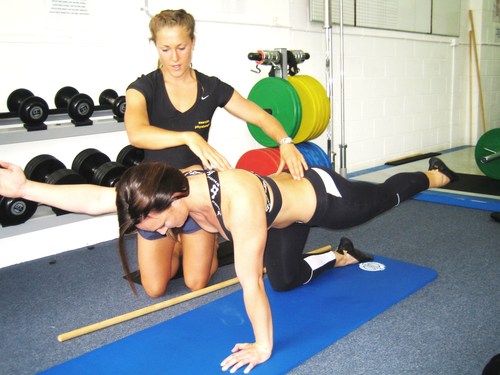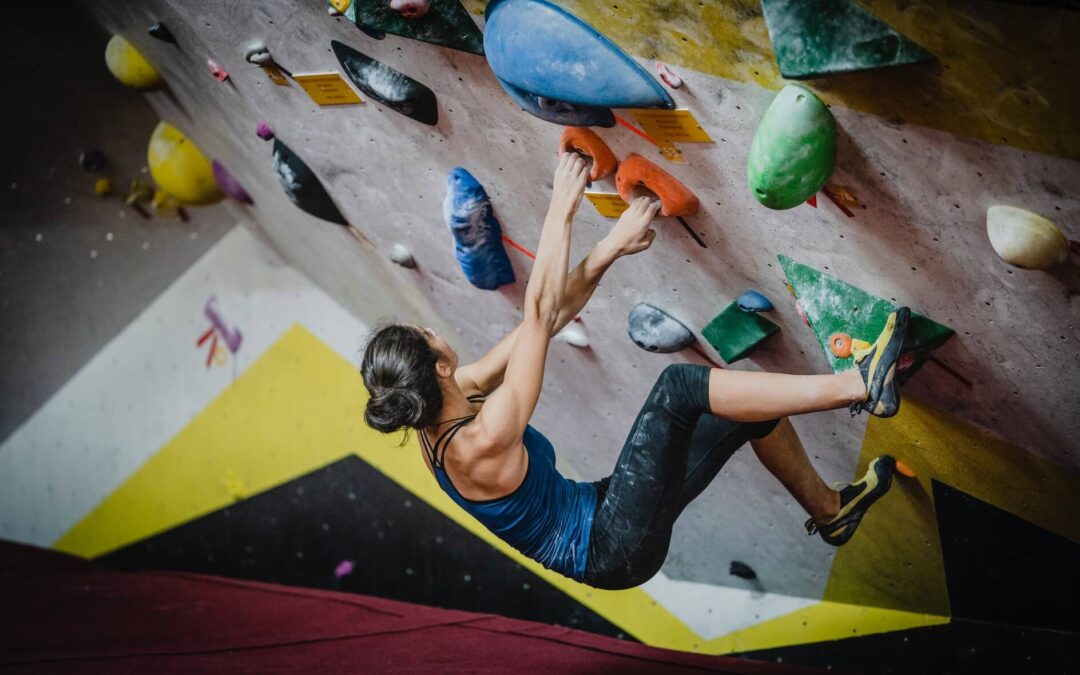In Part One we covered that the shoulder is an unstable joint to allow for all the mobility we need, common reasons to develop funked up shoulders and exercises that can lead to trauma or injury. In part two we’re looking at ways to rehab a compromised shoulder with specific exercise demonstrations and stretch/mobility tips.
Once you’ve taken care of the cause, a major principle in treating and managing shoulder problems such as impingements is to remove excessive muscle tightness and to gradually restore the strength to the rotator cuff muscles which allows the ball of the arm bone (humerus) to centralise again on the socket part of the joint where there is no more impingement. This then results in a gradual reduction in pain until the shoulder is back to full function. The time that this takes can range from 2 weeks to several months depending on the severity of your symptoms and how long you have been suffering pain before seeking treatment.
Work with a physical therapist in bringing more stability, mobility and strength to the joint. From the beginning of rehabilitation, ensure adequate mobility in the thoracic spine and cervical spine. Stretch/release any tight muscle/fascia, which could include other areas such as the quad, hip flexor, quadratus lumborum, glute, groin/adductors/pectineus, teres major/minor, subscapularis, infraspinatus, supraspinatus, upper trapezius, levator scapulae, deltoids (anterior, middle, posterior), triceps, latissimus, and bicep tendon (short and long head). Remember everything is related.
Rehab for a shoulder impingement could include the following movements, starting with muscle activation, proprioception and stabiliser training before any strength or power exercises. Although the list of exercises below can help, your own rehab program is best to be made specifically for you since areas of muscle weakness will be different in each case.
Shoulder Rehabilitation Exercises, Self-Mobilisations and Stretching
1) Swiss Ball stabilisation / circling
2) Quadriped decompressions and lifts (opposite hand and knee) without shifting your weight to the side or tilting the hips or shoulders.

3) Crawling forwards, backwards, with knees up or weighted.
Crawling used in shoulder rehabilitation can be used effectively because our anatomy is designed to take high loads through the shoulder from crawling position.
4) Skipping rope circling
5) Light shoulder internal and external rotation at different angles of humeral abduction and elbow flexion.
Use a variety of resistances such as dumbbells, cable machine, bands. High repetition sets, such as 20 rep. You may not need to work both internal and external rotation equally, depending on your muscle imbalance.
6) Lower and mid trapezius strengthening
eg. Trap 3 exercise at different angles/circling or LYTP. A variation I call Rotator Cuff Circles and Windscreen Wiping on the swiss ball are two that I favour for lower and mid trapezius strengthening.
7) Posterior deltoid and rhomboid strengthening
– reverse flyes from different angles of the cable pulley setting (high/mid/low), pulling, scapula retractions. High repetitions. Here’s a rhomboid exercise with a band crossed in front of the chest and hooked around the shoulders.
8) Bodyblade oscillations.
Eg. 30seconds – 2 minute. The bodyblade fires agonist/antagonist muscles for coordination and proprioception. Pump in the arm position where there is no pain and you’ll gradually be able to work in greater ranges of motion. The most important thing for injuries = pumping blood to that area (massage and well prescribed exercise).
9) Oscillating bench press with bands and kettlebells
– single and double arm.
10) Tricep extensions
(cable, dumbell, barbell) single and double arm.
11) Neutral or reverse grip lat pull-down/chin ups double and single arm.
12) Pulling
(cable, dumbell, sled, ropes) – single and double arm.
13) Rhomboid Pull
15) Bottom-up kettlebell pressing
The heavy end positioned upward requires more shoulder stabiliser recruitment. This clip here also demonstrates an explosive dumbell overhead press and floor press which would be an end stage rehab goal.
16) Mobilise thoracic spine
eg. lying with your back 2 tennis balls and work along thoracic spine. Best to get a therapist/coach to teach you how to do this properly first. Incorporate thoracic rotation exercises into your training, light resistance and focusing on controlled movement through full range.
17) Stretch out the pecs + pec fascia.
18) Stretch out the upper trapezius, levator scapulae and other tight neck muscles.
I’m proud of this little creation below, it has helped my shoulder tension massively.
19) Stretch out the upper arm and forearm muscle fascia.
Note: not all these exercises are going to benefit you and may be the absolute wrong thing to do for your specific shoulder issue. For example, you may have long and weak rhomboids and therefore it will benefit you to pull (adduct) the shoulder blades together before initiating a pulling movement during a rehabilitation stage. However if your rhomboids are normal or are tight and short already, it is a bad idea to squeeze shoulder blades together before something like a lat pull down or row. Cueing should only be used as a rehabilitation exercise where the rhomboids are long and weak. Pulling the shoulder blades together prior to initiating a pull leads to faulty motor sequence because their optimal length for force production is altered and therefore leads to pain and trigger point development in other muscles which recruit to help out (eg. teres major, teres minor and infraspinatus). Bottom line = get assessed by a pro.
To summarise this hefty post, if you’ve got a shoulder issue, your first priority will be to take a break from exercises that are causing you pain, ironing out trigger points (therapist or self), softening crazy-tight fascia, regaining healthy range-of-motion, stretching tight muscles, and then gaining stability through well prescribed exercise before you work toward strength endurance, strength, power and return to sport.
